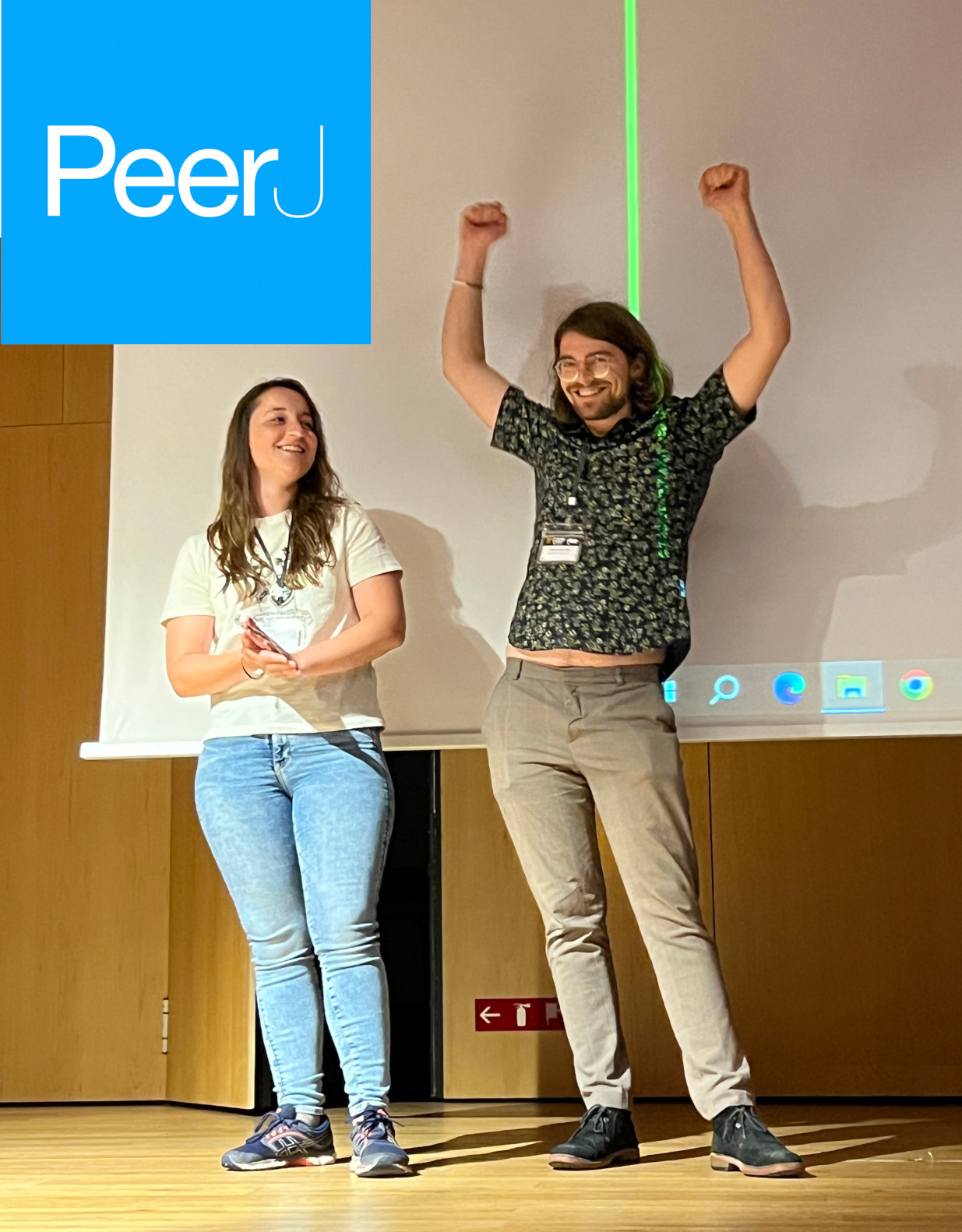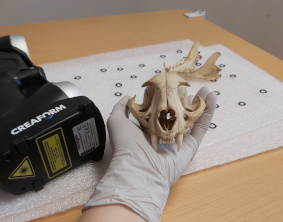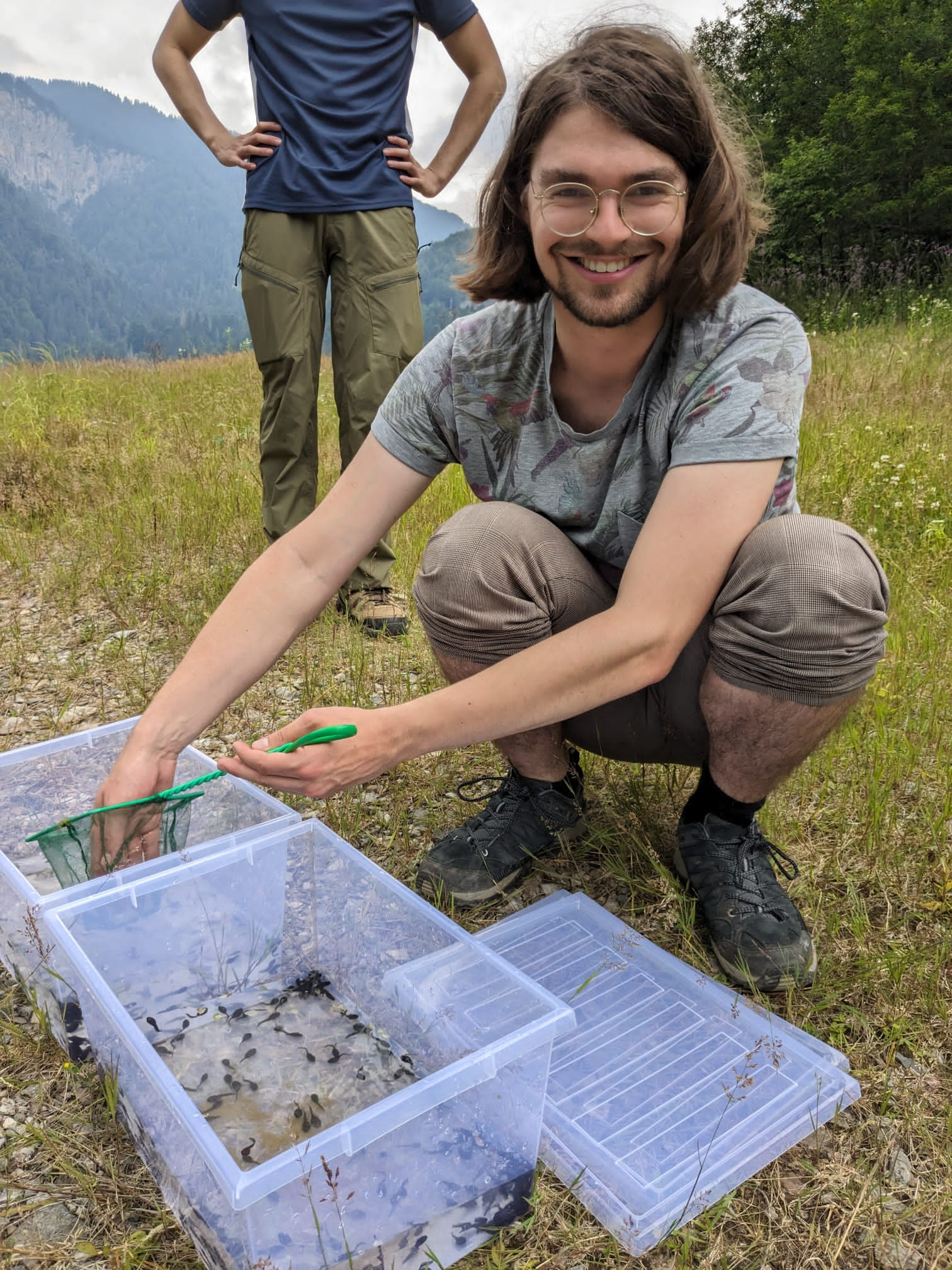 Every year, the annual meeting of the European Association of Vertebrate Palaeontologists (EAVP) gathers hundreds of scholars for a week dedicated to all aspects of vertebrate palaeontology. This event takes place in a different location every year, and the 20th edition was organized by the Institut Català de Paleontologia Miquel Crusafont in Sabadell, close to Barcelona, from June 26th to July 1st, 2023. The conference was an impressive success, with 233 participants, 211 contributions, three different fieldtrips, and several days of active scientific discussions. Three different workshops (on graphic design for scientists, how to step out from academia, and photography in palaeontology) and two roundtables (on supervision and mentoring and women in palaeontology) were also offered to the attendees.
Every year, the annual meeting of the European Association of Vertebrate Palaeontologists (EAVP) gathers hundreds of scholars for a week dedicated to all aspects of vertebrate palaeontology. This event takes place in a different location every year, and the 20th edition was organized by the Institut Català de Paleontologia Miquel Crusafont in Sabadell, close to Barcelona, from June 26th to July 1st, 2023. The conference was an impressive success, with 233 participants, 211 contributions, three different fieldtrips, and several days of active scientific discussions. Three different workshops (on graphic design for scientists, how to step out from academia, and photography in palaeontology) and two roundtables (on supervision and mentoring and women in palaeontology) were also offered to the attendees.
After a fully-online meeting in 2021 and the hybrid one last year, the 20th EAVP annual meeting saw the comeback of a copious in-person attendance, even though still offering online slots for those not able to come to Sabadell. This fact, together with the record of participants for an EAVP event, concurred in making this annual meeting the important hive of ideas, collaborations, and simply personal connections it has always been, especially for the several students and early career researchers present.
The 21st edition of the EAVP annual meeting is going to take place in Longyearbyen, Svalbard (Norway), from August 28th to September 1st, 2024. More information will be available at https://eavp.org/.
Andrea Villa, EAVP Convenor.
*****
Narimane Chatar PhD candidate at the University of Liège, Belgium.
Can you tell us a bit about yourself and your research interests?
I did my bachelor degree in the geology department at the University of Liège and then spent the first year of my master degree in the Systematic, Evolution and Palaeontology MSc degree in La Sorbonne (Université Pierre et Marie Curie) in Paris as an Erasmus student. During this year in Paris I spent my 2 months research internship in the MNCN in Madrid. Finally, I came back to Liège for the last year of my master degree in geology but went back for 3 months to Madrid for my masters thesis. I am interested in the evolution of carnivorans, their functional morphology and paleoecology. For my PhD project, I am investigating the convergence between felids and nimravids, the two carnivorans families that developed a cat-like morphology. I study both the cranium and the mandible using high precision surface scans, I visited major institutions in the world trying to build the largest dataset possible. I explore two aspects in this project: the shape; which I quantify using three dimensional geometric morphometric and the function; which I investigate using finite element analysis.
What first interested you in this field of research?
For as long as I can remember, I have always dreamed of becoming a paleontologist. As a kid, I quickly became fascinated by fossils and dinosaurs. My other passion was for felids (cats, lions, tigers, etc.), and I soon understood that I could combine those two interests and started reading about all the amazing extinct felids that ever existed. I had a specific fascination for sabertoothed cats. I think trying to understand how such impressive animals could hunt with their peculiar morphology is what truly caught my interest. I am truly living my childhood dream!
You won the Best Poster award at EAVP 2023, can you briefly explain the research you presented?
 The poster I presented during the EAVP2023 showcased some of the results of my 3DGM analyses. I quantified the shape variation in the cranium of felids and nimravids. Our results show that there is a true continuum of shape between all cat-like carnivorans: families, sub-families and morphotypes all overlap in the morphospaces. It is really in the human nature to try to create categories/morphotypes, but those analyses show that when studied at a large scale (our dataset contains 189 crania and mandibles) the limit between those categories becomes blur. Our analyses also show that some small cats have a cranial shape as derived from the ancestral condition as some extreme sabretoothed taxa. Finally, we highlighted a peak of cat-like disparity in the Miocene which has, sadly, only been dropping ever since.
The poster I presented during the EAVP2023 showcased some of the results of my 3DGM analyses. I quantified the shape variation in the cranium of felids and nimravids. Our results show that there is a true continuum of shape between all cat-like carnivorans: families, sub-families and morphotypes all overlap in the morphospaces. It is really in the human nature to try to create categories/morphotypes, but those analyses show that when studied at a large scale (our dataset contains 189 crania and mandibles) the limit between those categories becomes blur. Our analyses also show that some small cats have a cranial shape as derived from the ancestral condition as some extreme sabretoothed taxa. Finally, we highlighted a peak of cat-like disparity in the Miocene which has, sadly, only been dropping ever since.
What are you next steps?
Those results are part of a larger chapter involving 3DGM about which I cannot say too much just yet as it is still in preparation. For now, during my PhD I explored the shape of the crania and mandibles, the functioning of the mandible and the ontogeny in sabretoothed vs non sabretoothed taxa. An aspect that I did not have the time to explore yet is the functioning of the cranium. While the main role of the mandible is to acquire and process food, the cranium is a much more complex structure balancing food acquisition, sensory organs and cognition. The next step in my research is to try to understand the extrinsic and intrinsic drivers of the cat-like cranium form-function relationship combining experimental and analytical techniques . This will be the subject of my first post doc for which I have been awarded a BAEF fellowship to spend 1 year in UC Berkeley in Prof. Jack Tseng’s lab.
Julien van der Hoek PhD candidate at the University of Manchester, UK.
 Can you tell us a bit about yourself and your research interests?
Can you tell us a bit about yourself and your research interests?
My research interests currently include Carnivora (carnivorous mammals), mammal evolution and locomotion. My PhD focuses on the evolution of cursoriality (running) in carnivores and ungulates (hoofed mammals). I want to find out what drove these animals to evolve the adaptations for running that are so characteristic for many of the species in these groups.
What first interested you in this field of research?
Palaeontology has fascinated me before I can even remember. I read every single book on the subject I could get my hands on as a child. The way I got into mammal palaeontology is a bit more complicated. In the third year of my bachelor’s degree in biology, I was thinking of doing a project on placoderms (armoured fish). However, I received an email from Lars van den Hoek Ostende that included a photograph of a carnivoran mandible encased in travertine. After describing and comparing the fossil, I managed to get a publication out of it. The joy I felt and still feel while working with fossils is what kept me hooked on mammal palaeontology ever since!
You won the Best Talk award at EAVP 2023, can you briefly explain the research you presented?
The research I presented was my master’s thesis, where I studied the forelimb and femur of Ictitherium ebu, a hyaena with long, slender legs that was hypothesised to be cursorial by Lars Werdelin. However, nobody had actually tried to test this hypothesis, which led us to compare this hyaena to modern species of hyaenas and dogs (Canidae). By measuring the forelimb bones and femora of these species, morphological characters were calculated that allowed for comparisons between the species. In addition to these characters, a schematic representation of the elbow joint was calculated by measuring distances between landmarks on the distal anterior humerus of each specimen.

Reconstruction of Ictitherium ebu (credit: Javier Herbozo)
We found that I. ebu has an overall morphology resembling the maned wolf, a canid which also has really long and slender limbs. The elbow joint resembles the aardwolf, a smaller hyaena that feeds by licking termites of the ground. These two animals are not that specialised for running, which led us to the conclusion that the limbs of I. ebu would be adapted for looking over tall grass, locomotor efficiency and pouncing on prey, much like the modern-day maned wolf.
What are you next steps?
While there is more work that could be done on the palaeobiology of I. ebu, my research project will zoom out and study what drove cursoriality to evolve in carnivores and ungulates. By combining ecological methods and palaeontological data I want to study the macroevolutionary patterns of these groups and see if coevolution and/or climate change led these taxa to evolve cursorial adaptations.

